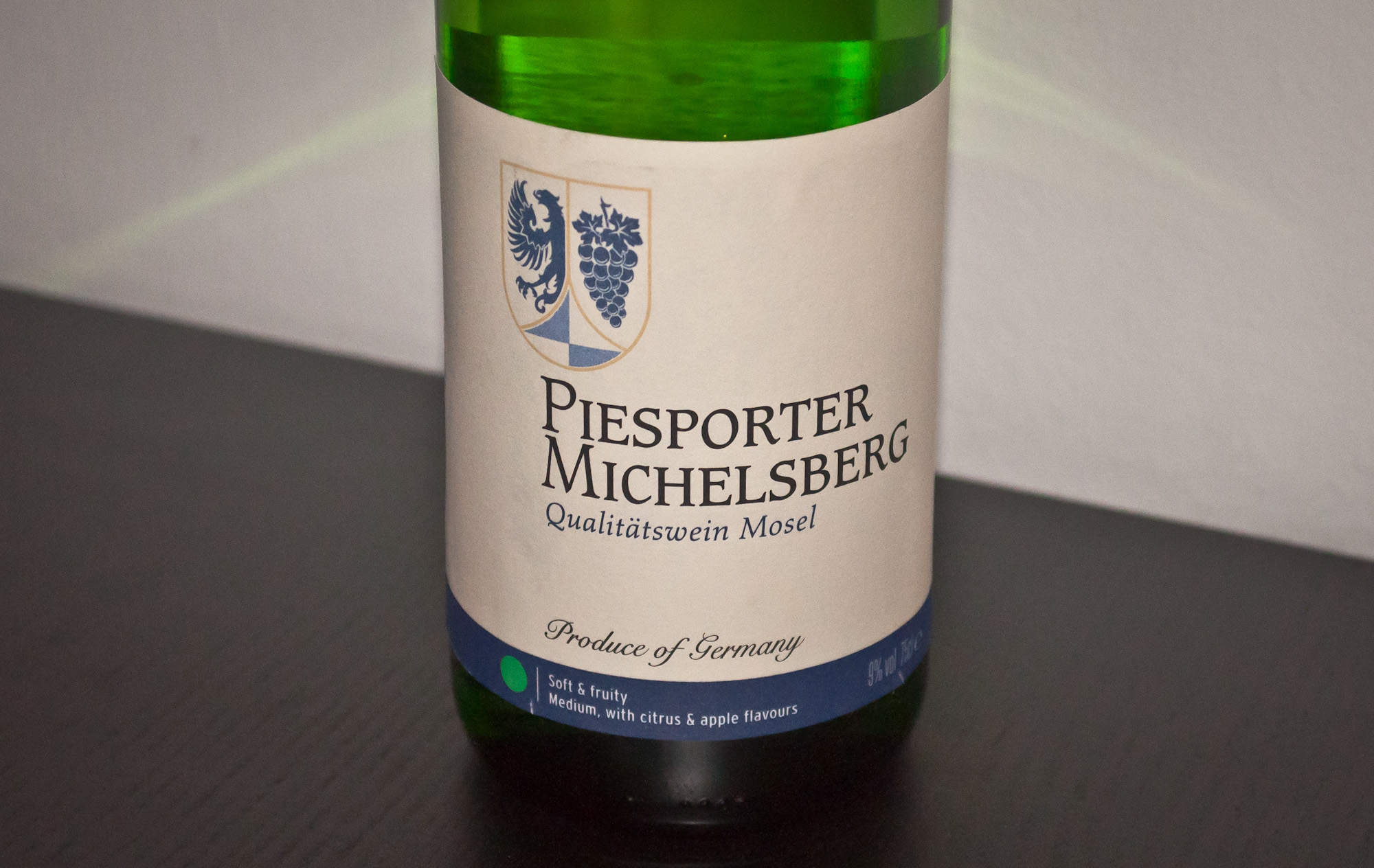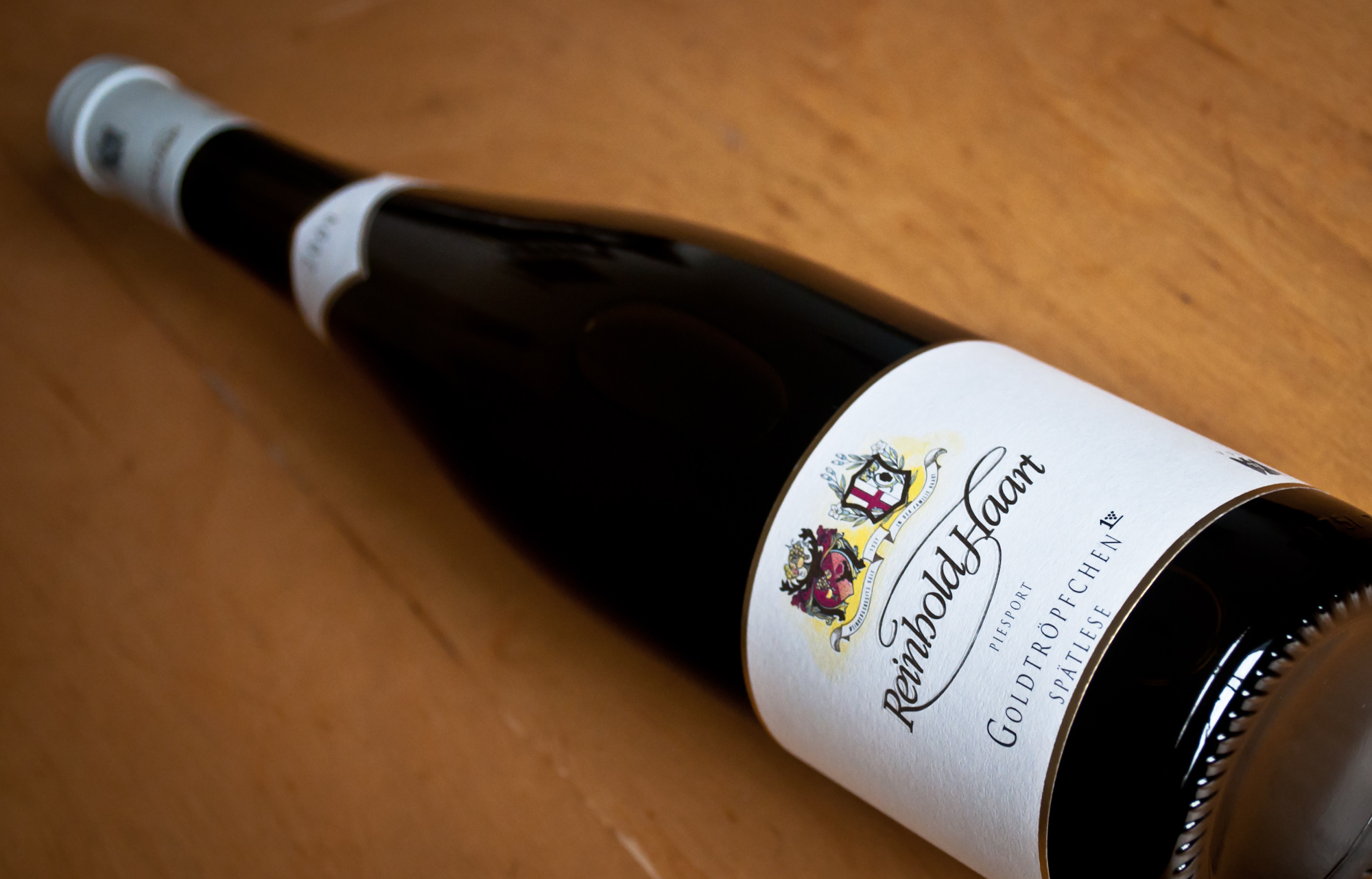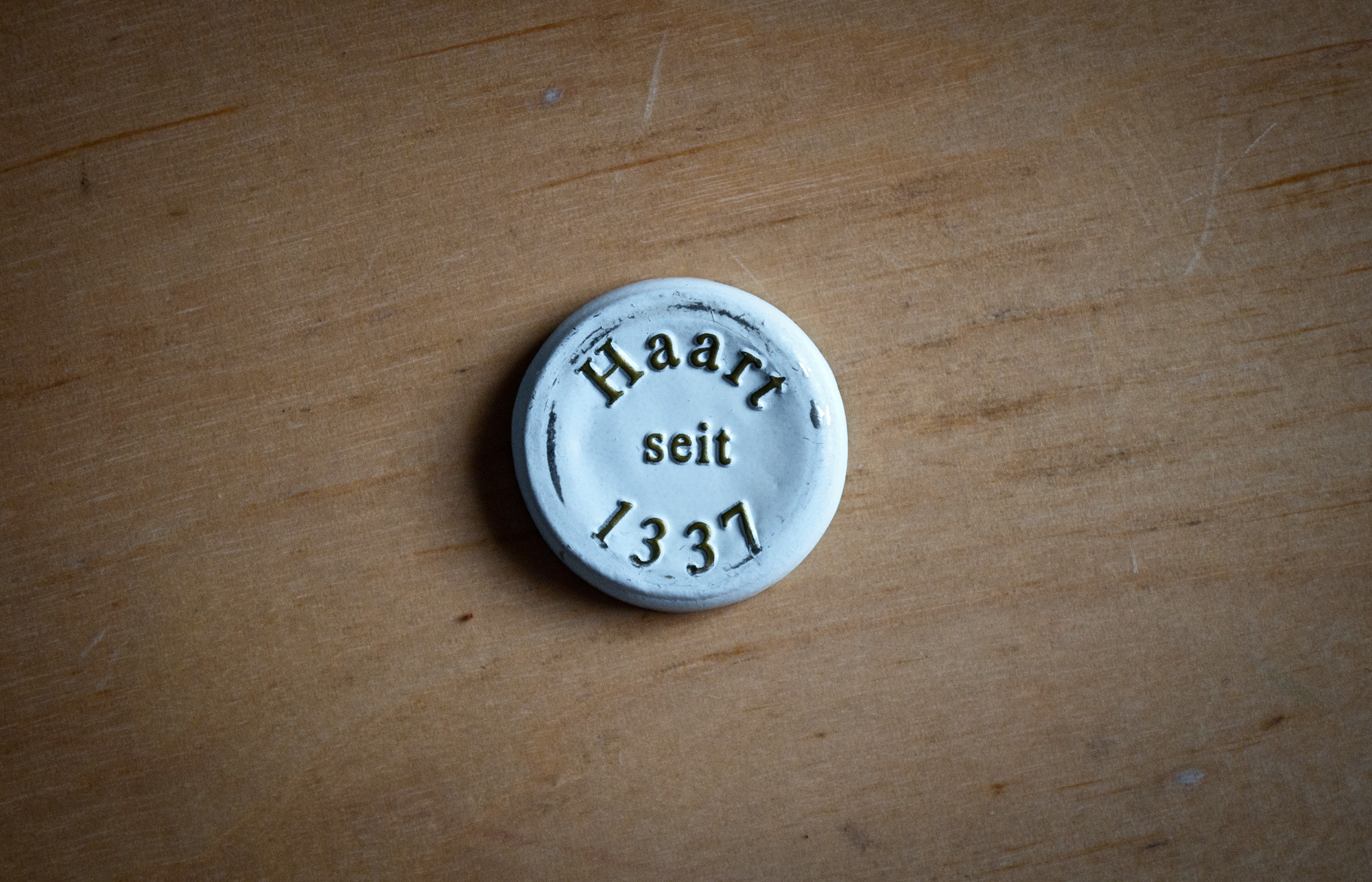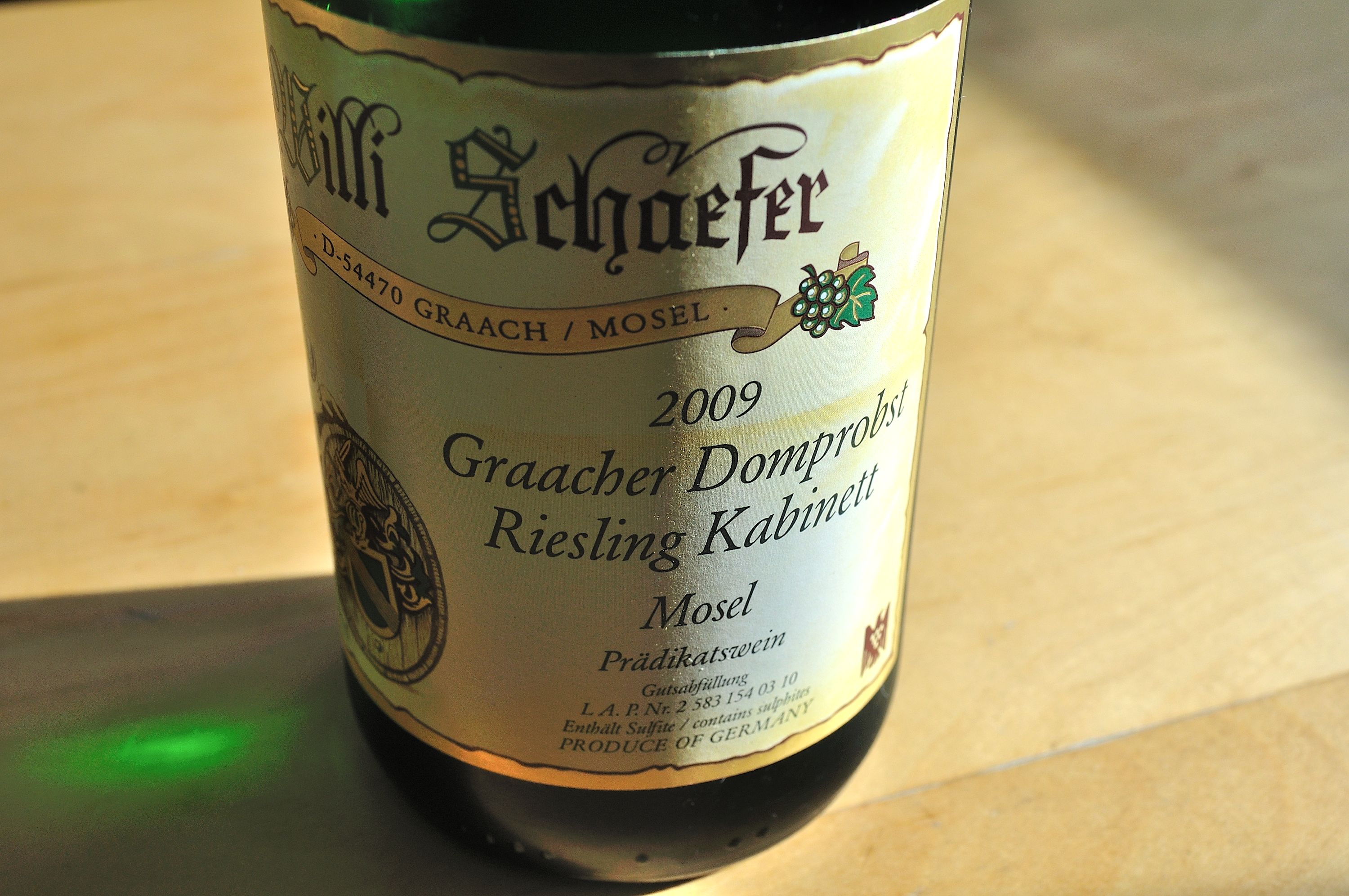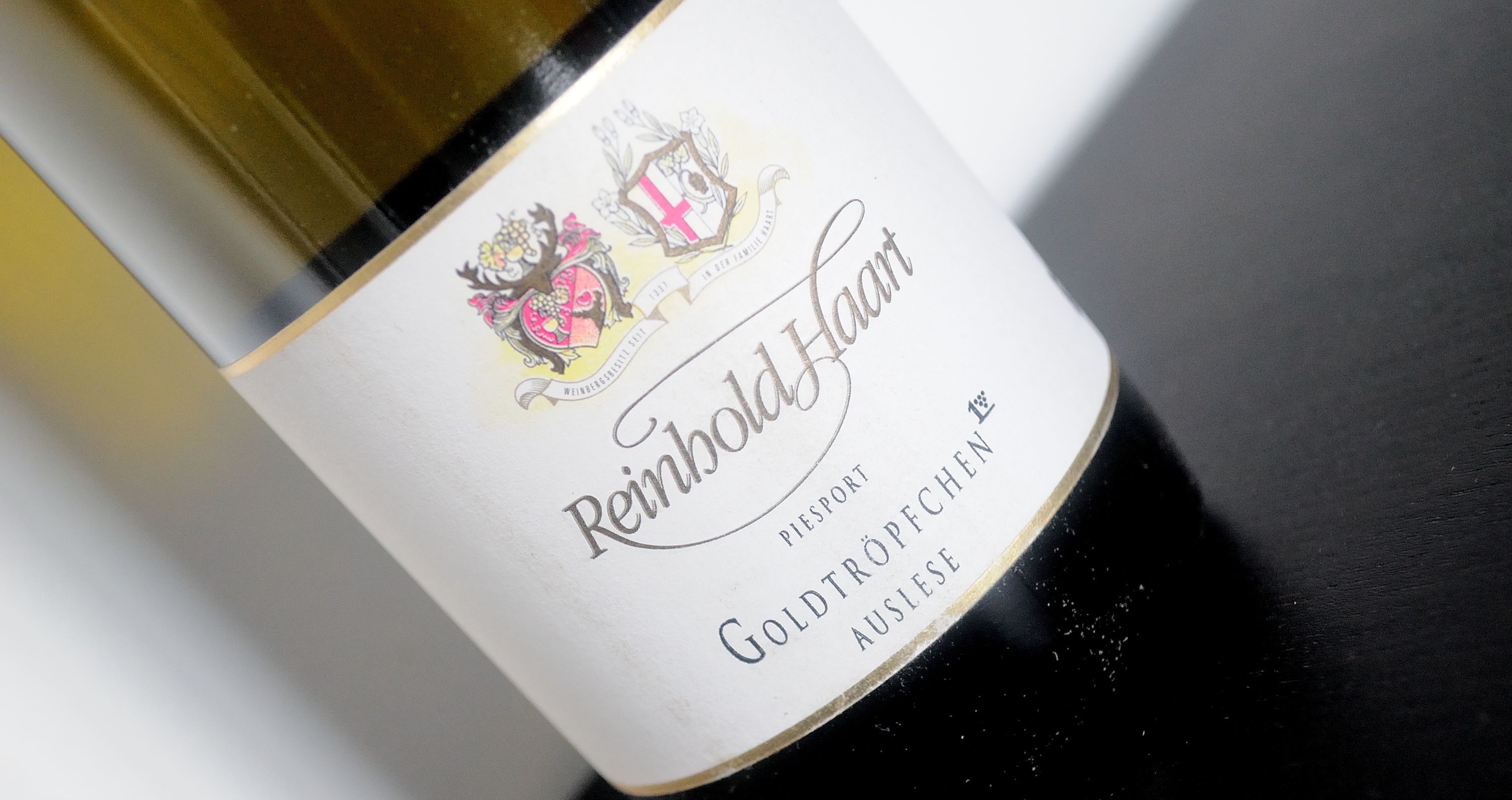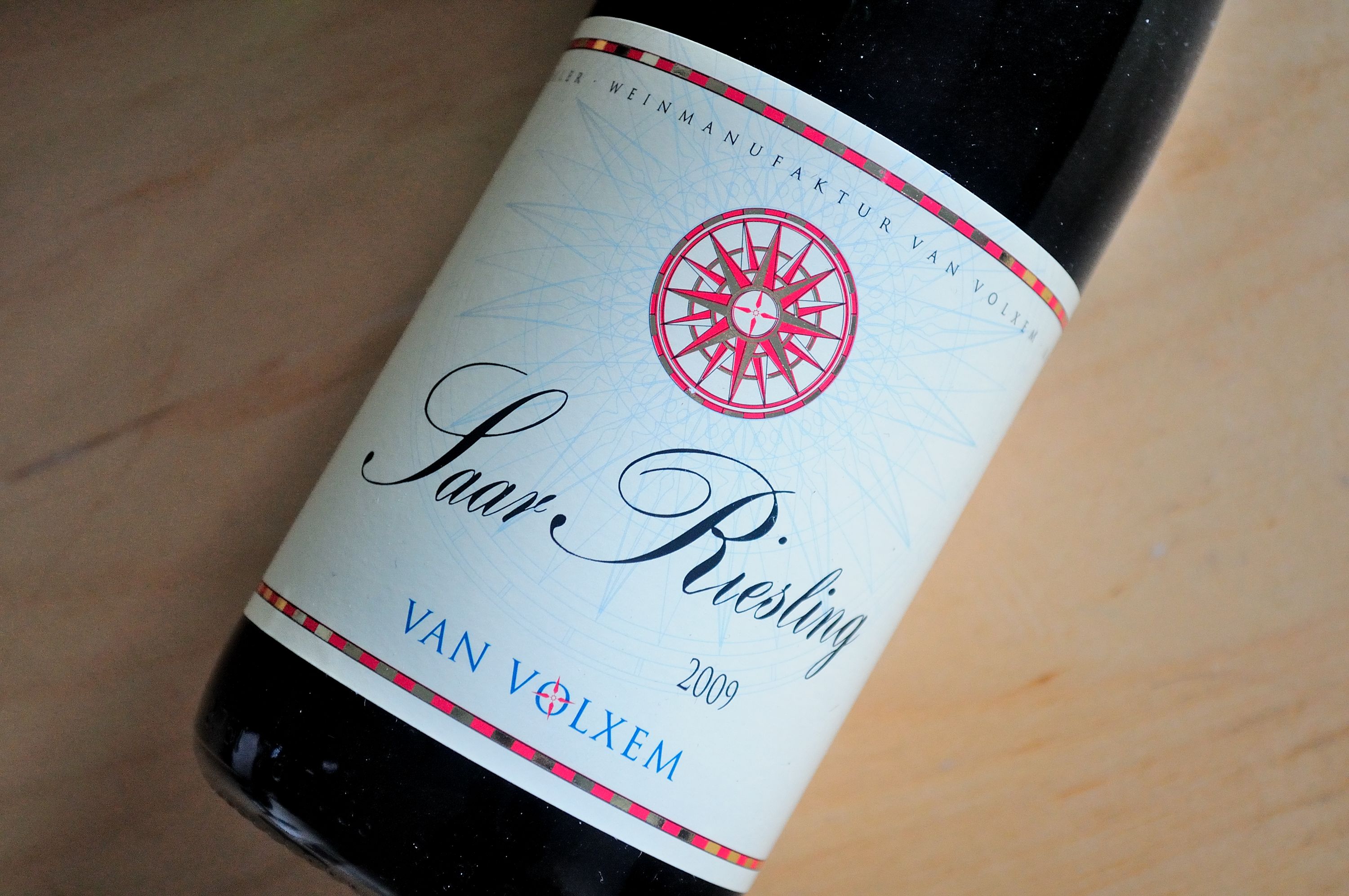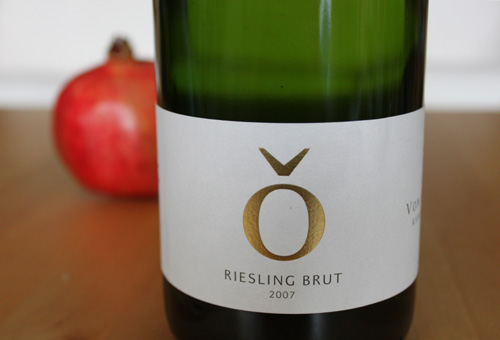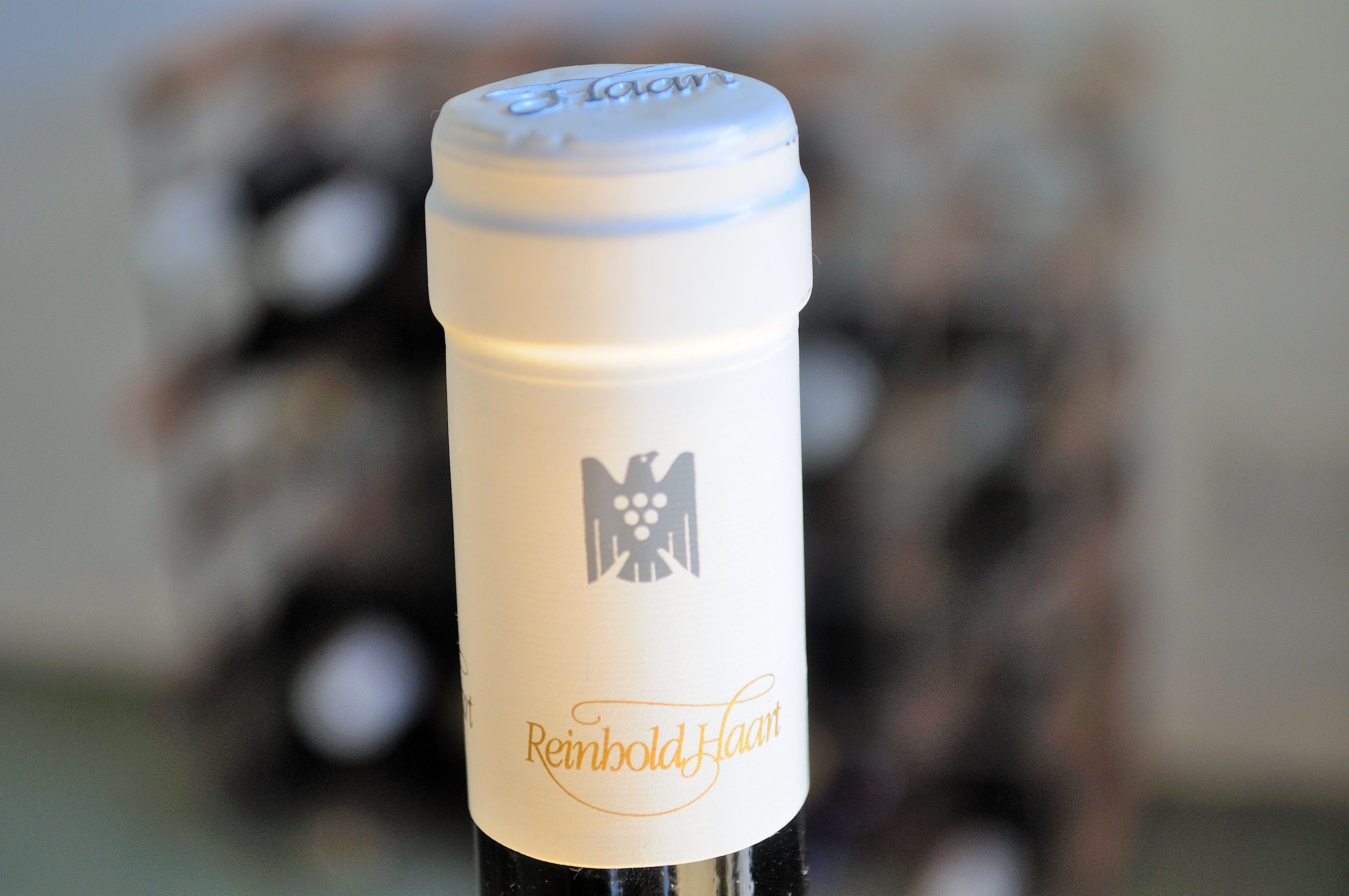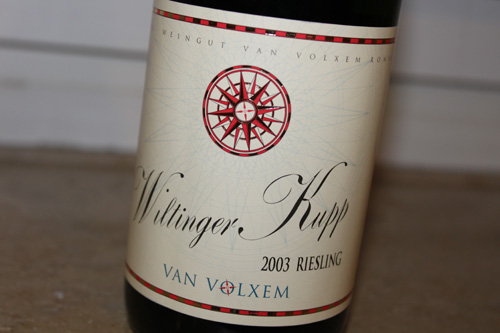Reinhold Haart, Piesporter Goldtröpfchen, Riesling Spätlese Goldkapsel, 2006
Piesport is a lovely village in the German Mosel Valley. Because of the peculiarities of the German wine law, the name can show up on the labels of very cheap wines from somewhere in the area (Piesporter Michelsberg), or it can be on first class Riesling from some of the Mosel's best vineyards. After having recently indulged myself in the delights of the supermarket wine version, it is now time to revisit the outstanding Goldtröpfchen vineyard version.
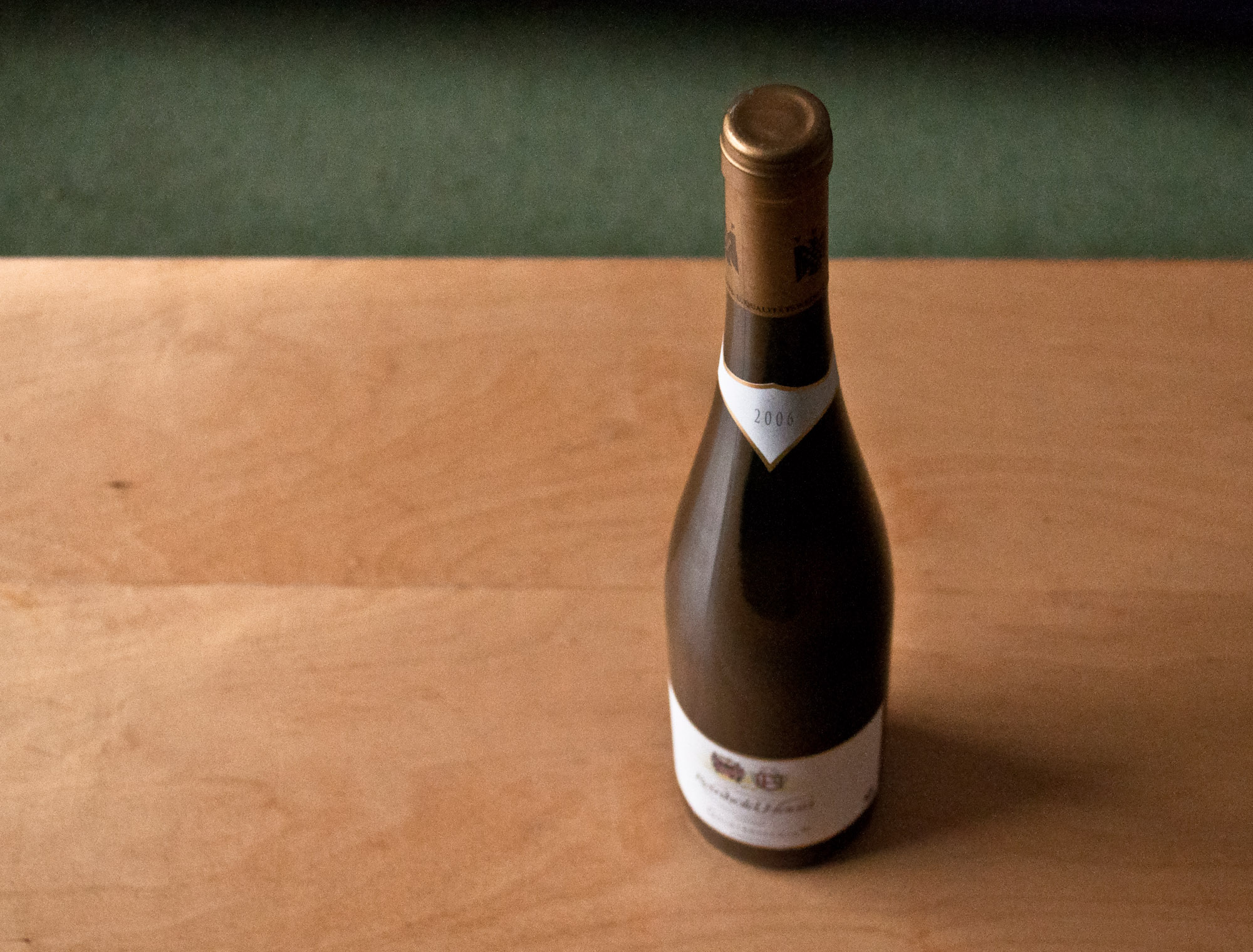
"Goldtröpfchen" means little drop of gold, and the Rieslings made by Theo Haart and family in Piesport can indeed be described as such. Today's Haart Riesling even comes with a gold capsule ("Goldkapsel"), indicating that the Haarts were particularly pleased with the quality of what went into this bottle.

